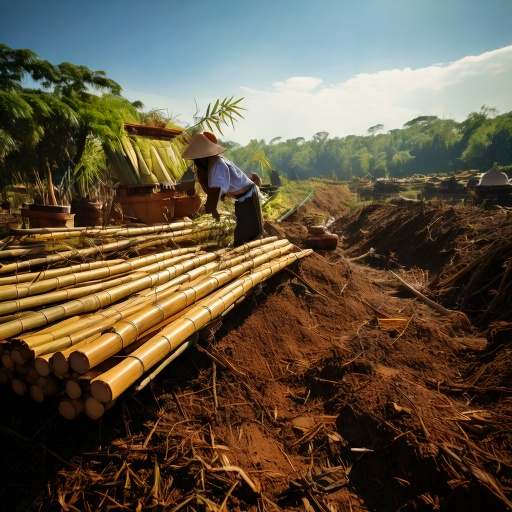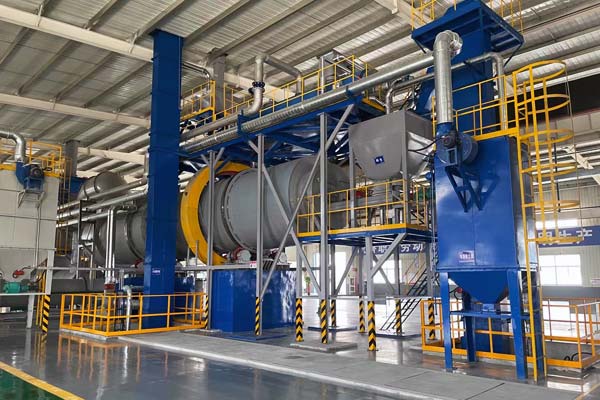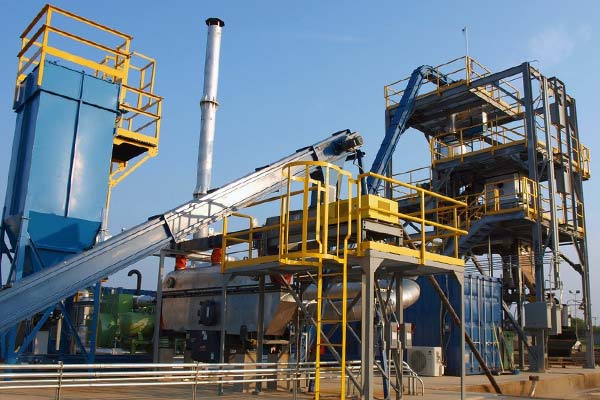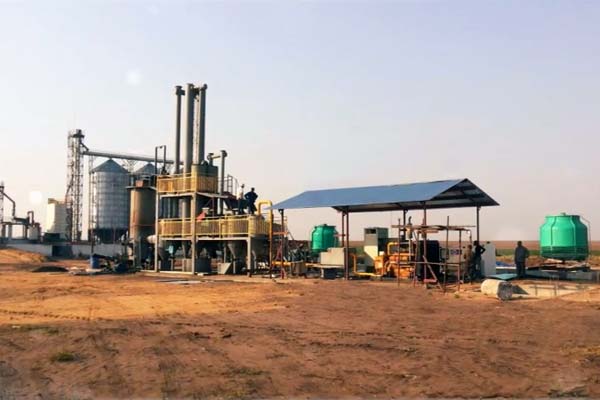Biomass & Energy: The Engine of Ecosystem Resilience
The foundation of the Ecoladang Ecosystem is our commitment to true sustainability, beginning with energy independence. We view agricultural residue—often a costly disposal liability—not as waste, but as a guaranteed, low-cost, decentralized energy source and carbon sink.
Our integrated system is designed to de-risk the franchise model by decoupling operational viability from volatile fossil fuel prices and unreliable grid power. Through strategic technology integration and proven thermal conversion processes, we convert biomass into four distinct revenue and utility streams. This section details the core processes that power our farms, sequester carbon, and create high-margin end products.
The Four Streams of Biomass Conversion (Pillar 1)
The Ecoladang system converts agricultural residue (such as palm fronds, husks, or bagasse) into a quartet of high-value outputs: clean power, stable carbon sequestration, flexible fuels, and premium filtration materials. This integrated approach ensures every input generates maximum economic and environmental returns, directly supporting the high-tech PCDS architecture (Pillar 2) and Micro-Farms (Pillar 3).
1. Biomass Gasification: Clean Power & Self-Sufficiency
Gasification is the thermal conversion process used to generate Syngas (synthetic gas).
- The Utility Stream: This clean-burning gas fuels on-site generators, providing the essential, uninterrupted electricity and thermal energy required to power the PCDS units and all climate-controlled micro-farms (hydroponics, etc.). This achieves energy self-sufficiency, shielding the operation from grid outages and electricity cost inflation.
- Economic Benefit: By transforming agricultural waste into operational power, we convert a disposal cost into a massive reduction in utility expenses, dramatically lowering the overall Operating Expenditure (OPEX) for the franchise unit.

Carbonization is a controlled, low-oxygen process that produces Biochar as its primary output.
- The Environmental Stream:This process is a verifiable method of carbon sequestration. When the Biochar is incorporated into soil, it locks carbon away for hundreds or thousands of years, creating a tangible path for generating high-quality Carbon Credits.
- The Agricultural Stream (Pillar 3):The carbon-rich Biochar is a high-performance, regenerative soil amendment. When added to the land, it dramatically improves water retention, nutrient cycling, and microbial activity, leading to superior crop yields and long-term soil health.

Pyrolysis offers a flexible, multi-product approach, extracting maximum value from waste by controlling temperature and reaction time.
- The Flexible Revenue Stream:This process delivers a diversified set of assets based on market demand:
- -- Syngas: Used for immediate power generation, supplementing the Gasification stream.
- -- Bio-oil (Liquid Fuel): A renewable liquid fuel source that can be used on-site for backup power or sold as a replacement for heavy fuel oils in industrial applications.
- Biochar (Solid Carbon):Used for sequestration or further refinement.
- Strategic Advantage:The ability to tune the output between liquid fuel and solid carbon allows the local manager to optimize for whichever market (energy or agriculture) offers the highest margin at any given time.

Essential infrastructure and services
This crucial final step involves upgrading the standard Biochar through a secondary thermal-chemical process to create Activated Carbon (AC).
- The High-Margin Stream:AC is a high-surface-area material with immense commercial demand globally in water and air filtration, gold recovery, and various industrial processes.
- Market Position:By producing AC on-site, the franchise unit elevates a simple agricultural byproduct into a premium, internationally traded commodity, creating a significant, high-margin revenue channel that is independent of local agricultural markets.

Our Pledge: Guiding Principles for Sustainable Growth
Ecoladang is more than a franchise; it is a pledge to build a greener, more prosperous future from the ground up. Our principles ensure that financial success is always integrated with environmental responsibility and community upliftment.
- The Principle of Purpose: We integrate profit with purpose. Our business model is fundamentally designed to create financial success through environmental and social benefit, not at their expense.
- The Prosperity Mandate:We are dedicated to proving that economic success must be achieved through resilient, multi-stream revenue generation. Our diversified ecosystem ensures long-term stability and profitability, shielding our franchisees from the volatility of single-market reliance.
- The People-First Commitment: We champion community empowerment by committing to local hiring, providing high-value skills and jobs that uplift local populations, and securing their economic future through certified vocational training.
- The Environmental Responsibility: We uphold our environmental responsibility by transforming agricultural waste into clean energy, implementing regenerative land use practices, and driving the creation of valuable carbon credits across all operations.